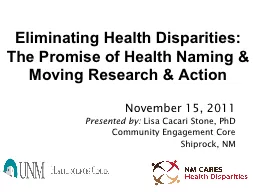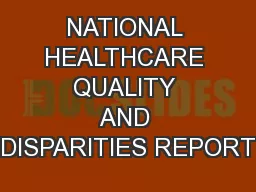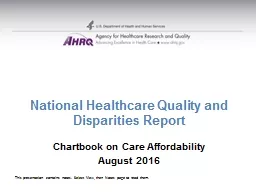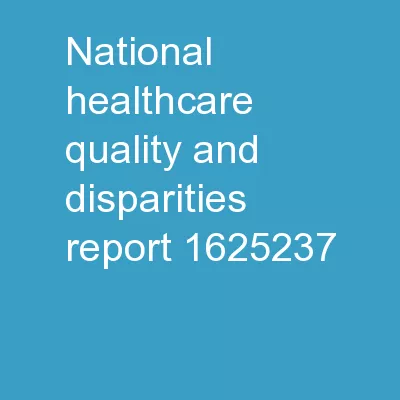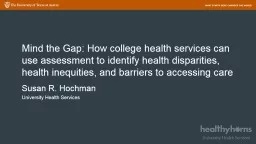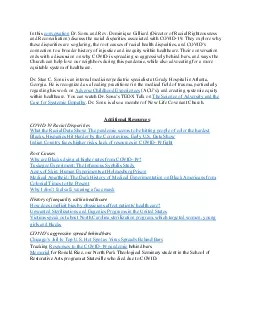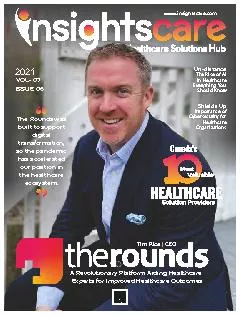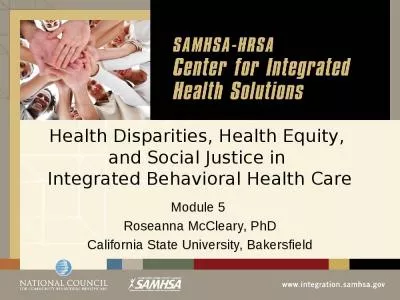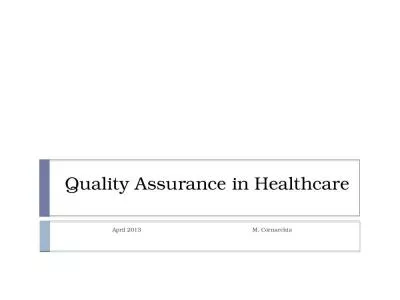PPT-NATIONAL HEALTHCARE QUALITY AND DISPARITIES REPORT
Author : olivia-moreira | Published Date : 2018-11-05
Chartbook on Patient Safety March 2016 This presentation contains notes Select View then Notes page to read them National Healthcare Quality and Disparities Report
Presentation Embed Code
Download Presentation
Download Presentation The PPT/PDF document "NATIONAL HEALTHCARE QUALITY AND DISPARIT..." is the property of its rightful owner. Permission is granted to download and print the materials on this website for personal, non-commercial use only, and to display it on your personal computer provided you do not modify the materials and that you retain all copyright notices contained in the materials. By downloading content from our website, you accept the terms of this agreement.
NATIONAL HEALTHCARE QUALITY AND DISPARITIES REPORT: Transcript
Chartbook on Patient Safety March 2016 This presentation contains notes Select View then Notes page to read them National Healthcare Quality and Disparities Report Annual report to Congress mandated in the Healthcare Research and Quality Act of 1999 PL 106129. Gena. Wilson, MD. ECRIP Fellow. Institute for Family Health. September 30, 2010. Source: U.S. Census Bureau, Population Division. National . Healthcare Disparities . Report . 2009. “. Disparities in Health and Health care persist in many areas. The Promise. . of Health Naming . & . Moving Research & Action. . November 15, 2011. Presented by:. Lisa Cacari Stone, PhD. Community Engagement Core . Shiprock, NM. Hispanics had the worst rates on 4 indicators. & “Hospital . equity . Reports. ”: . Leading the Curve in Healthcare Equality . .. John R. Stone, MD, . PhD. Center for Health Policy and Medicine. johnstone@creighton.. edu. . – Oc. tober . Chartbook. on Patient Safety. July 2017. This presentation contains notes. Select View, then Notes page to read them.. National Healthcare Quality and Disparities Report (NHQDR). Annual report to Congress mandated in the Healthcare Research and Quality Act of 1999 (P.L. 106-129). Disparities Report. Chartbook. on Care Coordination. June 2016. This presentation contains notes. Select View, then Notes page to read them.. National Healthcare Quality and Disparities Report. Annual report to Congress mandated in the Healthcare Research and Quality Act of 1999 (P.L. 106-129). Chartbook. on Care Affordability. August 2016. This presentation contains notes. Select View, then Notes page to read them.. National Healthcare Quality and Disparities Report. Annual report to Congress mandated in the Healthcare Research and Quality Act of 1999 (P.L. 106-129). Chartbook on Patient Safety. October 2018. This presentation contains notes. Select View, then Notes page to read them.. National Healthcare Quality and Disparities Report. Annual report to Congress mandated in the Healthcare Research and Quality Act of 1999 (P.L. 106-129). Healthcare Robotics Market Report published by value market research, it provides a comprehensive market analysis which includes market size, share, value, growth, trends during forecast period 2019-2025 along with strategic development of the key player with their market share. Further, the market has been bifurcated into sub-segments with regional and country market with in-depth analysis. View More @ https://www.valuemarketresearch.com/report/healthcare-robotics-market Mind the Gap: How college health services can use assessment to identify health disparities, health inequities, and barriers to accessing care Susan R. Hochman University Health Services Learning Objectives 1Zixu HeBabson CollegeSociology of Health and MedicineKristen TzocApril 23rdTHE RELATIONSHIP BETWEEN ETHNIC DISPARITIES AND HEALTH2The relationship between ethnic disparities and healthAccess to quali In this Dr Sonuand Rev Dominique Gilliard Director of Racial Righteousness and Reconciliationdiscussthe racial disparities associated with COVID-19 They explore why these disparities are so glaringthe Canada\'s 10 Most Valuable Healthcare Solution Providers July 2021 features some exceptional Canadian healthcare solution providers and Social Justice in . Integrated Behavioral Health Care. Module 5 . Roseanna . McCleary. , PhD. California State University, Bakersfield. Learning Objectives. Increase knowledge of health disparities and health equity and the context in which... April 2013 M. Cornacchia . A QA program is a management system to help an organization “do work correctly.” . The QA Plan . is the document describing the QA program the project will implement.
Download Document
Here is the link to download the presentation.
"NATIONAL HEALTHCARE QUALITY AND DISPARITIES REPORT"The content belongs to its owner. You may download and print it for personal use, without modification, and keep all copyright notices. By downloading, you agree to these terms.
Related Documents


